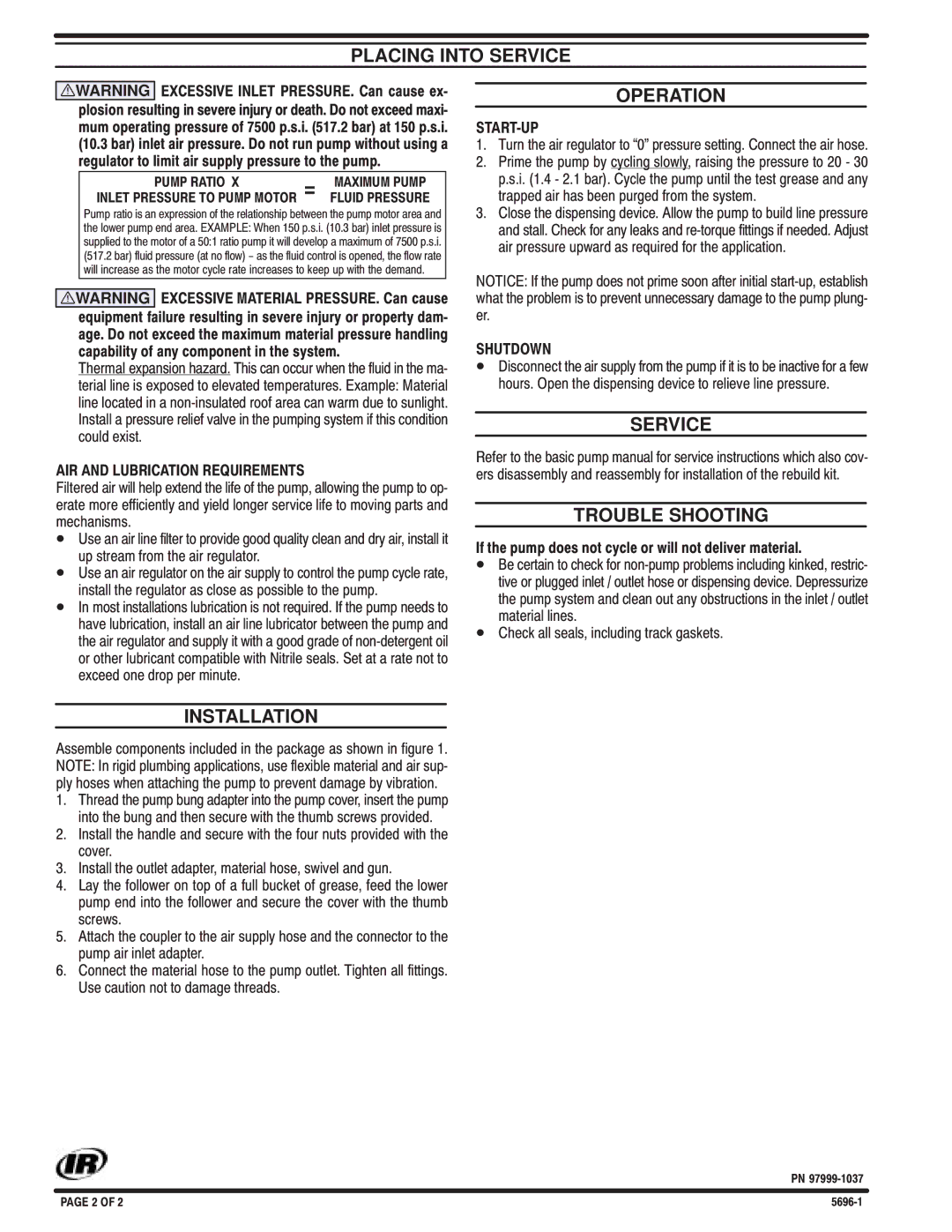5696-1 specifications
The Ingersoll-Rand 5696-1 is a powerful and versatile pneumatic tool designed for a range of industrial applications. Renowned for its durability and efficiency, this tool is a staple in the toolkit of professionals who require reliable performance in demanding environments.One of the main features of the Ingersoll-Rand 5696-1 is its robust construction. The tool is built with high-quality materials that can withstand heavy use, ensuring longevity and reliability. The ergonomic design makes it comfortable to handle, reducing user fatigue during prolonged operation. Weighing in at a manageable level, it allows for easy maneuverability without compromising strength.
The 5696-1 is equipped with a high-performance motor that delivers impressive torque and speed. This makes it ideal for a variety of tasks, from automotive repairs to heavy machinery maintenance. The tool's adjustable speed settings provide users with enhanced control, enabling them to tailor the output to suit specific applications.
Moreover, the Ingersoll-Rand 5696-1 incorporates advanced technologies that enhance its performance and efficiency. The inclusion of a pneumatic mechanism ensures powerful action while maintaining lower air consumption. This not only translates into cost savings but also contributes to a more environmentally friendly operation.
Safety is a critical consideration in the design of the 5696-1. It features a built-in safety lock that prevents accidental activation, providing peace of mind for users in high-pressure work environments. The tool also comes with a reliable exhaust system that directs air away from the user, minimizing discomfort and improving overall safety.
Maintenance of the Ingersoll-Rand 5696-1 is straightforward, with accessible components that facilitate quick servicing. Its durable construction reduces the frequency of repairs and downtime, making it a cost-effective choice for any workshop.
In conclusion, the Ingersoll-Rand 5696-1 stands out in the market of pneumatic tools due to its combination of power, durability, and user-centric design. With advanced technologies and safety features, this tool is well-suited for both professional and industrial use, delivering reliable performance that meets the high standards required by today’s demanding applications. Whether in an automotive shop or a manufacturing setting, the Ingersoll-Rand 5696-1 is a smart investment for those seeking excellence in pneumatic tools.

